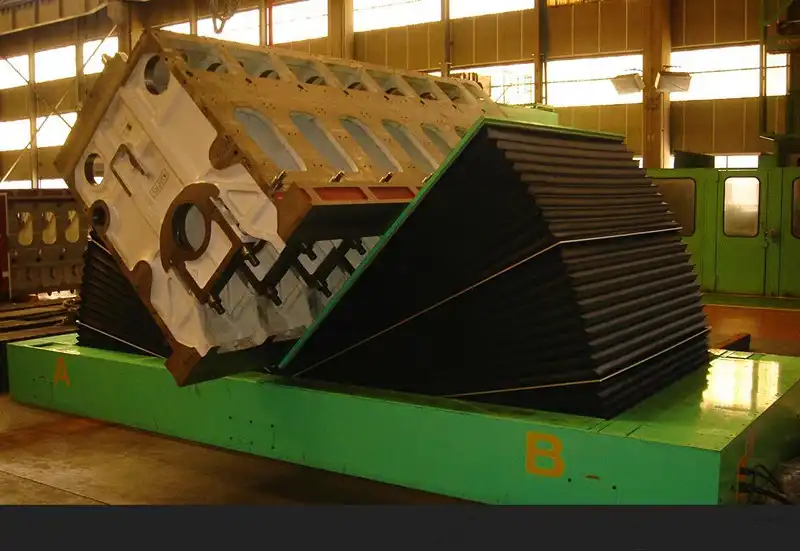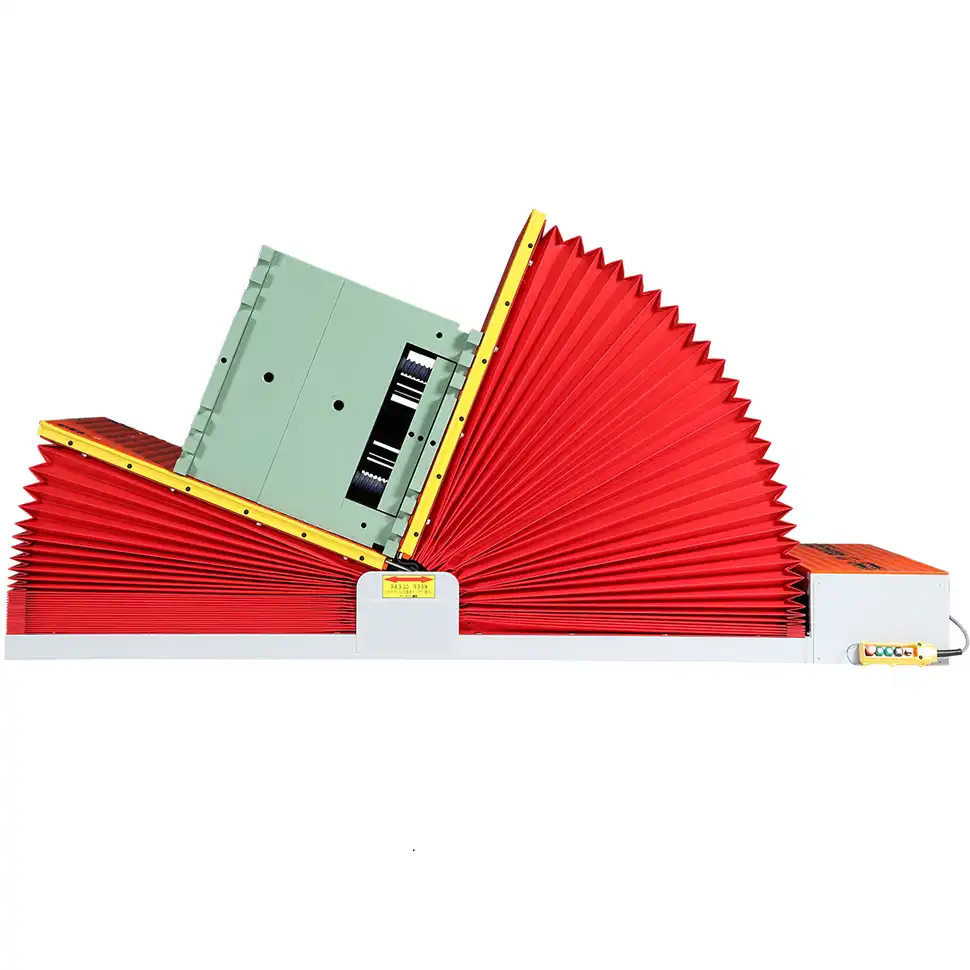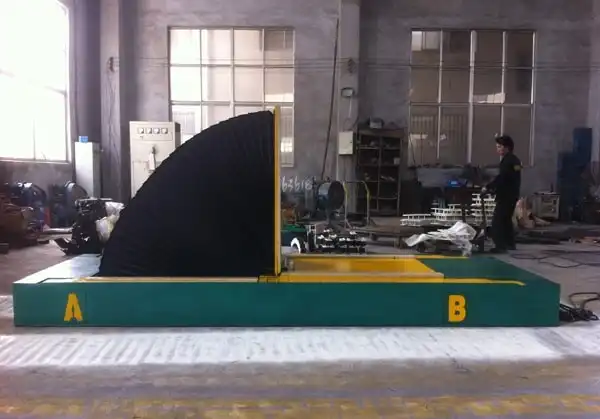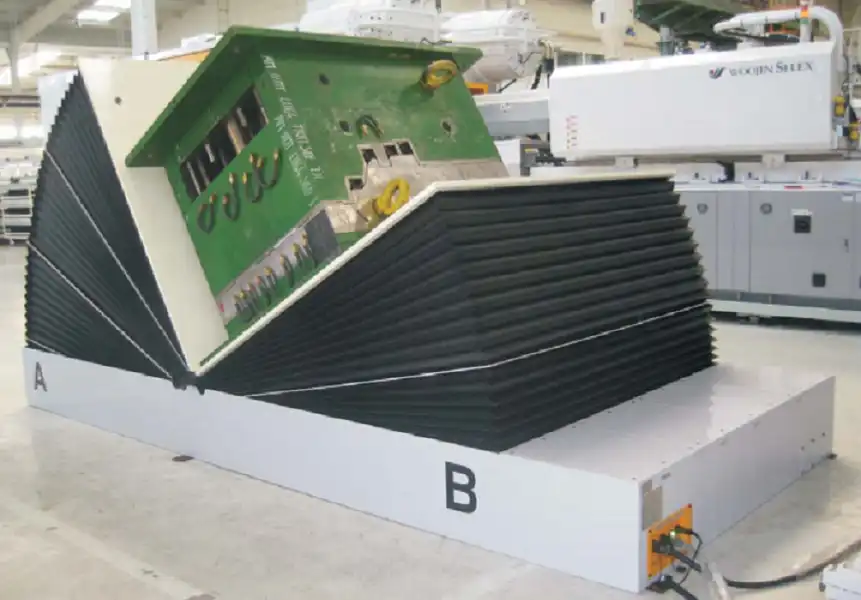Mold Flipper: How Can Indonesian Factories Cut Handling Risks Fast?
In my years visiting factories across Southeast Asia, I've seen incredible ingenuity. But I've also seen recurring risks. One of the most common is the way heavy molds and dies are handled. In many Indonesian factories, I still see teams using overhead cranes and chains to flip multi-ton molds. Every time I witness this, I feel a knot in my stomach. It's a slow, unstable process that puts both expensive equipment and, more importantly, human lives at risk. This single, routine task can become a catastrophic point of failure, causing production halts, damaging valuable assets, and creating a constant, low-level anxiety on the factory floor. It's a problem that many owners accept as a "cost of doing business," but I am here to tell you there is a much better, safer, and faster way.
The most effective way for Indonesian factories to quickly cut handling risks is by implementing a dedicated mold flipper. This machine provides a stable, controlled, and automated platform to turn heavy molds 90 or 180 degrees. It eliminates the dangerous reliance on manual rigging and overhead cranes for flipping operations, directly addressing the primary causes of accidents such as load slippage, uncontrolled swinging, and crushing hazards.

When I started my own packing machine factory, every Rupiah counted. I understood the pressure to make do with existing equipment. Using an overhead crane for everything seems efficient on the surface. But after seeing a near-miss where a heavy component slipped in its chains, I realized the true cost wasn't in the equipment, but in the risk. An accident doesn't just cost money in repairs or medical bills; it shatters the confidence of your team and can halt your entire operation. Investing in specialized equipment like a mold flipper isn't an expense; it's an investment in stability, safety, and speed. Let’s explore how this straightforward piece of machinery can be a game-changer for your facility.
What specific safety hazards does a mold flipper eliminate?
Imagine your skilled rigging team gathered around a massive steel mold, suspended precariously from a crane. The air is thick with tension as they try to guide the slow, awkward turn. One wrong move, one shift in the center of gravity, and the heavy chains could slip. This is a daily reality in many plants, a high-stakes gamble that exposes your workers to severe dangers. The reliance on manual coordination and the inherent instability of a suspended load create a recipe for disaster that even the most experienced crew cannot completely control.
A mold flipper primarily eliminates the critical safety hazards of load slippage, uncontrolled swinging, and crushing injuries that are common when using cranes for flipping. By securing the mold onto a solid, stable platform and performing the rotation with controlled mechanical power, it creates a predictable and safe process, removing workers from the immediate danger zone.

The Unseen Dangers of Crane Flipping
Using an overhead crane to flip a mold is like using a screwdriver to hammer a nail. It can get the job done, but it's the wrong tool and it's dangerous. The fundamental problem is a lack of control. When a mold is suspended by chains or slings, its center of gravity is constantly shifting. This creates immense and unpredictable forces on the rigging. A slight imbalance can cause the load to jerk or swing violently. This is how crushing accidents happen. Workers need to be close by to guide the load, placing them directly in what I call the "crush zone."
Furthermore, this method is highly dependent on operator skill and the condition of the rigging. Are your chains inspected daily? Is every sling rated correctly for the sharp edges of the mold? Has your crane operator had a long day? These variables introduce risk into what should be a standard, repeatable process. I once consulted for a factory in Jakarta where a minor slip during a flip caused a 5-ton mold to crash onto the floor. Thankfully, no one was hurt, but the mold, worth over $30,000, was damaged beyond repair. The production line it served was down for three weeks. This single incident cost them far more than a mold flipper ever would have.
Creating a Controlled and Safe Environment
A mold flipper, by contrast, is purpose-built for one task: turning heavy objects safely. The process is simple and secure. You place the mold on a heavy-duty steel table with a forklift or crane. The machine then takes over. Its powerful hydraulic or electromechanical system provides a smooth, non-jerky rotation at a constant, controlled speed. The mold is supported across its entire surface, not just by a few points of rigging. This completely eliminates the risk of dropping or slippage. Most importantly, the operator stands at a safe distance, using a simple remote control. There is no need for anyone to be near the moving load. This fundamentally changes the safety dynamic. You are replacing a high-risk, manual procedure with a low-risk, automated one.
| Hazard with Crane Flipping | How a Mold Flipper Mitigates It |
|---|---|
| Load Dropping/Slipping | The mold rests on a wide, stable platform, eliminating reliance on chains. |
| Uncontrolled Swing | Rotation is contained within the machine's robust frame, preventing any swinging motion. |
| Crushing/Pinch Point Injuries | The operator uses a remote control from a safe distance, away from the moving parts. |
| Chain/Sling Failure | The process eliminates the need for complex and vulnerable rigging setups. |
| Operator Skill Dependency | The machine performs a perfect, repeatable flip every time with the push of a button. |
How does investing in a mold flipper improve operational efficiency?
You see it every day. The mold maintenance team needs to flip a die. They call for the overhead crane. Production in that bay stops. The crane operator, who was about to move a coil of steel, now has to reposition the crane. Two riggers spend ten minutes attaching chains. They clear the area, and everyone watches as the slow, careful flip takes place. All in, a "simple" flip can easily consume 30 minutes and halt other crucial activities. This bottleneck is a silent killer of productivity, adding up to hundreds of lost hours over a year.
A mold flipper dramatically improves operational efficiency by cutting the time to turn a mold from over 30 minutes to less than five. This single improvement frees up your overhead crane for its primary material handling duties and allows your skilled technicians to focus on maintenance instead of risky rigging, directly boosting production uptime.

Reclaiming Wasted Time and Resources
When I analyze a factory's workflow, I always look for bottlenecks. Using a crane for mold flipping is one of the most common and easily solved. Let's break down the time savings. A traditional crane flip involves multiple, time-consuming steps: waiting for the crane, rigging the mold, clearing the area, the slow flip itself, and then unrigging. Each step is a potential delay.
Now, compare that to the workflow with a mold flipper. A forklift places the mold on the flipper. One operator presses a button on a remote. The mold flips in about 60-90 seconds. The forklift then picks it up. The entire process takes less than five minutes. The crane was never involved. The riggers are now available for more complex tasks. What used to be a 30-minute, multi-person operation becomes a 5-minute, one-person task. If your factory flips just four molds a day, you could be saving nearly two hours of operational time daily. That's almost 500 hours a year. This isn't just a minor improvement; it's a significant boost to your plant's overall capacity.
The Positive Ripple Effect on Production
The benefits extend far beyond the time saved on the flip itself. By decoupling mold flipping from your crane operations, you create a much more fluid and efficient factory floor. This is something I helped a client in Surabaya understand. They were struggling with production targets because their stamping presses were often waiting for either raw materials or mold changes. The single overhead crane was the choke point. By installing a dedicated mold flipper next to the tool and die maintenance area, they freed up the crane entirely.
The results were immediate. The crane could now continuously supply coils to the presses without interruption. Mold changeovers became faster because the maintenance team could prepare and flip molds proactively, without waiting for the crane. Their press uptime increased by over 15% within the first three months. The mold flipper didn't just make flipping faster; it streamlined their entire production flow. This is a perfect example of how solving one small problem can have a massive positive impact on the entire system.
| Metric | Traditional Crane Method | With a Mold Flipper | Improvement |
|---|---|---|---|
| Time per Flip | 20-40 minutes | 3-5 minutes | ~85% Reduction |
| Labor Required | 2-3 workers (including crane operator) | 1 worker | ~67% Labor Reduction |
| Crane Availability | Occupied and unavailable for other tasks | 100% available for production | Frees up critical equipment |
| Risk of Production Delay | High (due to crane scheduling) | Very Low | Improves overall throughput |
| Task Complexity | High (requires skilled riggers) | Low (simple push-button operation) | Reduces training needs |
What is the real return on investment (ROI) for a mold flipper in an Indonesian factory?
As a factory owner, I know that every investment must be justified. You look at the quote for a new machine and the first thing you think is, "What's the payback period?" It's easy to see a mold flipper as a "nice to have" luxury rather than an essential piece of equipment. You've been getting by with the crane for years, right? But this view ignores the significant hidden costs you are already paying—in wasted labor, production delays, and the ever-present risk of a catastrophic accident.
The real return on investment (ROI) for a mold flipper is calculated from a powerful combination of hard cost savings and massive productivity gains. It comes from eliminating wasted labor hours, preventing costly damage to molds and cranes, and increasing production uptime. For most Indonesian factories, a mold flipper pays for itself in less than 24 months, and often in under a year.

Calculating the Tangible Returns
Let's talk about hard numbers, the kind that matter on your P&L statement. The ROI isn't just theoretical. First, consider labor. If a 30-minute, 3-person crane flip becomes a 5-minute, 1-person task, you save significant man-hours every single day. Multiply that by the number of flips per week and your annual labor cost savings alone can be substantial.
Second, think about asset protection. I shared the story of the client with the $30,000 damaged mold. That one incident would have paid for a top-of-the-line mold flipper. Even minor damage—a scraped surface, a bent guide pin—requires costly and time-consuming repairs. A mold flipper handles your assets gently and precisely, dramatically reducing the risk of such damage. It also protects your crane. Overhead cranes are designed for vertical lifting, not the lateral and shock loads that come from an unstable flip. Using them this way accelerates wear and tear on their motors and gears, leading to more frequent and expensive maintenance.
The Invaluable Intangibles
The ROI calculation doesn't stop with direct costs. The most significant returns are often in areas that are harder to quantify but have a bigger impact on your business. What is the cost of a serious injury? In Indonesia, as everywhere, workplace safety regulations are becoming stricter. An accident can lead to government fines, legal action, and a damaged reputation. A mold flipper is a visible statement that you prioritize your team's safety. This improves morale and makes your company a better place to work, which in turn reduces employee turnover.
More importantly, let's connect this to your production goals. If your goal is to increase output, every minute of downtime is lost revenue. By making mold maintenance and changeovers faster and more predictable, the flipper directly contributes to higher machine uptime. That means more products shipped and more revenue generated. When you add the value of this increased throughput to the direct cost savings, the financial case becomes undeniable.
| Cost/Saving Category | Annual Impact (Example) | Notes for Your Factory |
|---|---|---|
| Labor Savings | -$15,000 USD | (Time saved per flip) x (Labor cost) x (Flips per year) |
| Averted Mold Damage | -$20,000 USD | Based on preventing one moderate incident per year. |
| Reduced Crane Maintenance | -$5,000 USD | Less wear and tear on a critical, expensive asset. |
| Increased Production Value | +$50,000 USD | Value of extra uptime (e.g., 15 min/day x operating days) |
| Total Annual Value | $90,000 USD | A typical mold flipper costs $25k-$60k. |
| Payback Period | < 12 Months | The investment quickly becomes a source of profit. |
What are the key features to look for when choosing a mold flipper?
So, you're convinced. A mold flipper is a smart move for your factory's safety and efficiency. But when you start looking, you'll find many different models and suppliers. They might look similar in photos, but the differences in engineering, materials, and construction are huge. Choosing the wrong machine could mean it fails under load, requires constant maintenance, or simply isn't suitable for your specific molds. As an engineer, I can tell you that the details are what separate a reliable, long-lasting machine from a piece of scrap metal.
When choosing a mold flipper, you must focus on four critical features: the certified load capacity, the table dimensions, the drive system (hydraulic or electromechanical), and the quality of the safety components. Ensure the capacity is at least 25% more than your heaviest mold, the table fits your mold's footprint, and the machine has robust, easily accessible safety features like emergency stops and overload protection.

Matching the Machine to Your Workload
The first step is to analyze your own needs. Don't just buy a standard model. You need a machine that is perfectly matched to the molds you handle every day.
- Load Capacity: This is the most important specification. Weigh your heaviest mold and add a safety margin of at least 25-30%. Never operate a machine at its maximum limit. A higher capacity machine will have a stronger frame, more powerful components, and will last much longer under your typical workload.
- Table Size: Measure the length and width of your largest mold's base. The flipper's table (or tables, for a 90-degree flipper) must be large enough to support the entire base securely. An overhanging mold is an unstable mold.
- Rotation Angle: Do you need a 90-degree flip or a 180-degree flip? A 90-degree flipper is ideal for maintenance, allowing access to the bottom of the mold. A 180-degree flipper is used to completely invert a die, often for two-sided molds. Choose the one that matches your process. Some machines can do both.
Differentiating Quality and Long-Term Reliability
Once you know the basic specs, you need to look deeper at the build quality. This is where a good supplier partner, like SHJLPACK, can guide you.
- Drive System: You'll typically choose between a hydraulic system and an electromechanical (screw-jack) system.
- Hydraulic: This is the workhorse. It provides immense, smooth power and is ideal for very heavy loads. It's robust and simple to maintain, though it can be prone to slow leaks if not properly cared for.
- Electromechanical: This system offers very precise control and positioning. It's cleaner (no oil), quieter, and often more energy-efficient, but its components can be more complex to repair.
- Construction and Components: Ask the supplier about the thickness of the steel used in the frame. Look at the quality of the welds. A good weld is smooth and consistent. Ask about the brands of the key components—the motor, the hydraulic pump, the electrical contactors. Using reputable, international brands means that spare parts will be easier to find in Indonesia years from now.
- Safety Features: This is non-negotiable. The machine must have multiple, easily accessible emergency stop buttons. It should have limit switches to prevent over-rotation and an overload protection system to shut down if the load is too heavy. Optional features like safety railings or light curtains can add another layer of protection.
| Feature | Why It Matters | What to Ask a Supplier |
|---|---|---|
| Load Capacity | The #1 factor for safety and machine longevity. | "What is the certified safe working load, and can you provide the engineering certificate?" |
| Drive System | Affects performance, precision, and maintenance needs. | "Which system is better for my load weight and environment, hydraulic or electric?" |
| Build Quality | Determines the machine's lifespan and resistance to wear. | "What steel grade and thickness do you use? What brands are the motor and hydraulics?" |
| Safety Interlocks | Automatically protects operators and equipment from errors. | "Describe all the standard safety features. Are light curtains or fencing available?" |
| Local Support | Ensures help is available for installation, training, and parts. | "Do you have a service partner in Indonesia or Southeast Asia?" |
Conclusion
A mold flipper is more than just a piece of equipment. It's a strategic investment in a safer, more efficient, and more profitable factory. It solves a dangerous, time-wasting problem simply.



